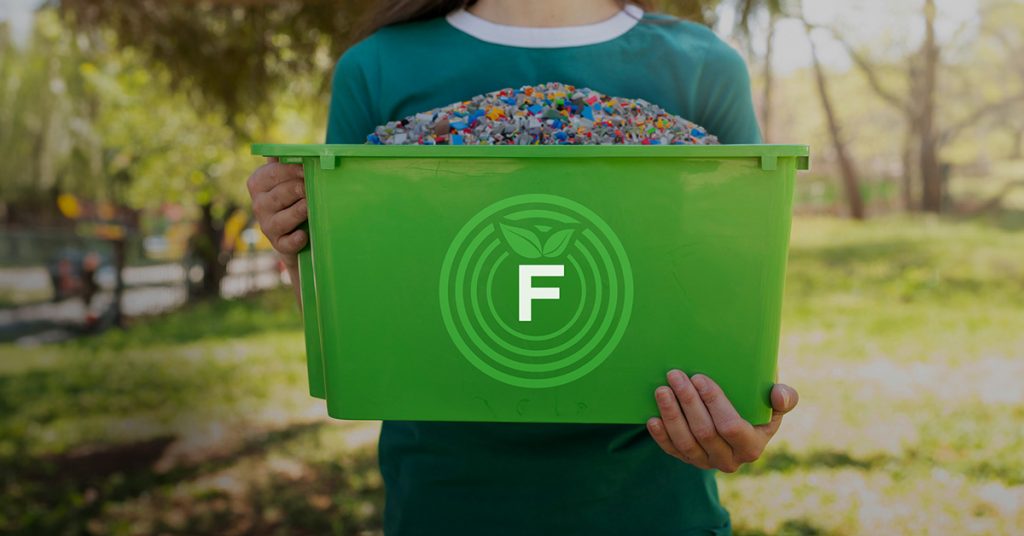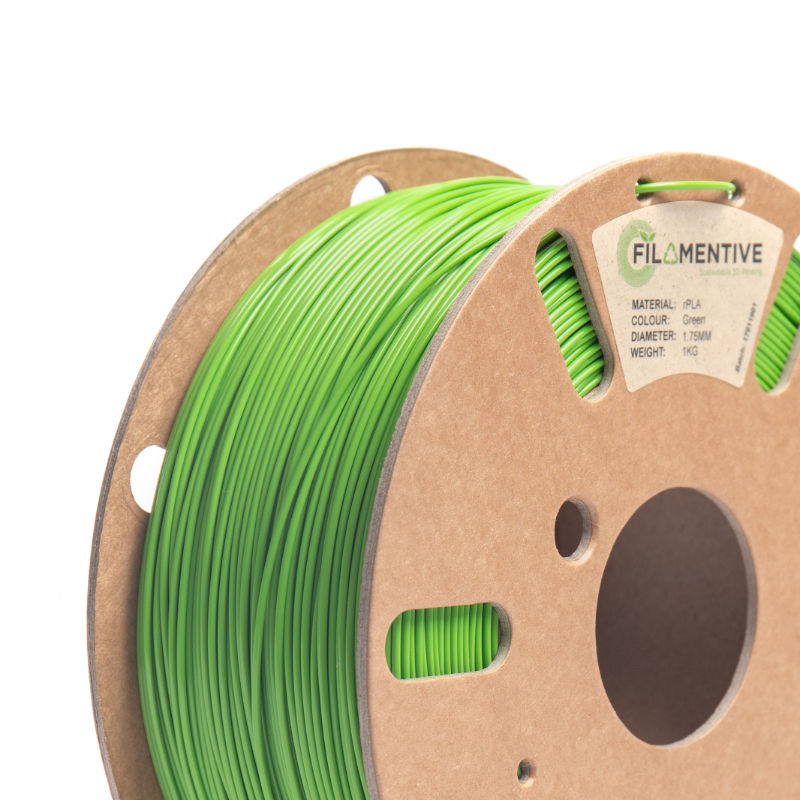UK-based 3D printing filament manufacturer Filamentive has launched its new free PLA 3D Printing waste recycling service.
Said to be the first scheme of its kind in the UK, this offering is designed to combat plastic pollution in FDM 3D printing. The company claims that 33% of 3D printed parts end up as waste, translating to 400,000 kg of plastic produced each year in the UK.
Filamentive’s new scheme seeks to remove barriers to material recycling. Provided in collaboration with the company’s UK-based partner 3D Printing Waste (3DPW), existing Filamentive customers can return their waste PLA free of charge. 100% of this material is then recycled into new products, creating a sustainable UK-based circular supply chain.
“Most 3D printing waste is not recycled, we need to change that. Although there are existing solutions for 3D printing waste in the UK, what sets our scheme apart is our commitment to offering our valued customers cost-free recycling and a tangible method of landfill diversion for their PLA 3D printing waste,” explained Filamentive’s Managing Director Revi Toor.
“Yes, there’s a price to recycling this waste, but we see it as an investment to further enable sustainable 3D printing, rather than a cost—planet before profit.”

Filamentive’s new PLA recycling service
FDM 3D printing is well known for producing large amounts of plastic waste, much of which isn’t recycled and ends up in landfill. According to Filamentive, a lack of recycling options and high costs are two key barriers faced by 3D printing users, 70% of whom do not recycle their material waste.
As part of the new scheme, Filamentive customers will receive a free 45L recycling box for each £500 they spend with the company. Those who are yet to purchase Filamentive products, but want to join the recycling scheme, can register their interest via Filamentive’s official website.
The service will see 3DPW send customers a recycling box which can be filled with PLA waste including reel ends, failed 3D prints, and used supports. Once ready, the company will arrange for collection directly from the user’s location within the UK. This material will then be recycled into new materials for 3D printing and injection molding, or upcycled into other plastic products.
Initially, the scheme will only be available for PLA waste. However, Filamentive hopes to expand its offering to more 3D printing polymers in the future. Within its first year, the company aims to recycle at least one tonne of material waste.
This new initiative represents Filamentive’s latest effort to reduce plastic waste associated with FDM 3D printing. Last year, the firm released its Economy PLA which is made from up to 99.99% recycled plastic. Available in black and white colors, the recycled 3D printing material is derived from post-industrial manufacturing waste, making it more sustainable than other conventional filaments.

Recycling 3D printing materials
The additive manufacturing industry is seeing a growing focus on recycling, with companies working to secure their material supply chains and minimize their environmental impact. A 2023 Life Cycle Analysis from KIMYA, the 3D printing materials subsidiary of French printing and coating firm ARMOR, concluded that recycling PETG filament can reduce CO2 emissions by up to 35%.
Earlier this year, carbon fiber material recycling specialist Vartega secured $10 million in preferred equity financing to expand its 100% recycled carbon fiber material. The company’s Fenix Fiber EasyFeed Bundles are targeted towards 3D printing applications, automotive, consumer electronics, and sporting goods applications.
Vartega is currently working with additive manufacturing material manufacturer Xtellar to produce and supply sustainable 3D printing materials and is actively conducting R&D to produce proprietary 3D printing thermoplastics. The $10 million financing, which was led by Diamond Edge Ventures, is being leveraged to upgrade the company’s 82,000-square-foot Denver-based production facility and commercialize additional recycling processes.
Elsewhere 3devo, a manufacturer of 3D printing filament recycling systems, recently announced a significant change to its business model. The Utrecht-based company offers hardware that allows users to recycle old material and create new 3D printing filaments.
However, at the close of 2023, the firm announced that it would no longer sell its recycling technology, instead offering a subscription-based “leasing model.” This will allow customers to rent equipment when they need it, and receive direct support for all stages of their projects. This new model is being advertised as risk-free, with customers able to return equipment if it is not performing as initially hoped.
What does the future of 3D printing hold?
What near-term 3D printing trends have been highlighted by industry experts?
Subscribe to the 3D Printing Industry newsletter to keep up to date with the latest 3D printing news.
You can also follow us on Twitter, like our Facebook page, and subscribe to the 3D Printing Industry Youtube channel to access more exclusive content.
Featured image shows a Filamentive PLA recycling box. Image via Filamentive.

